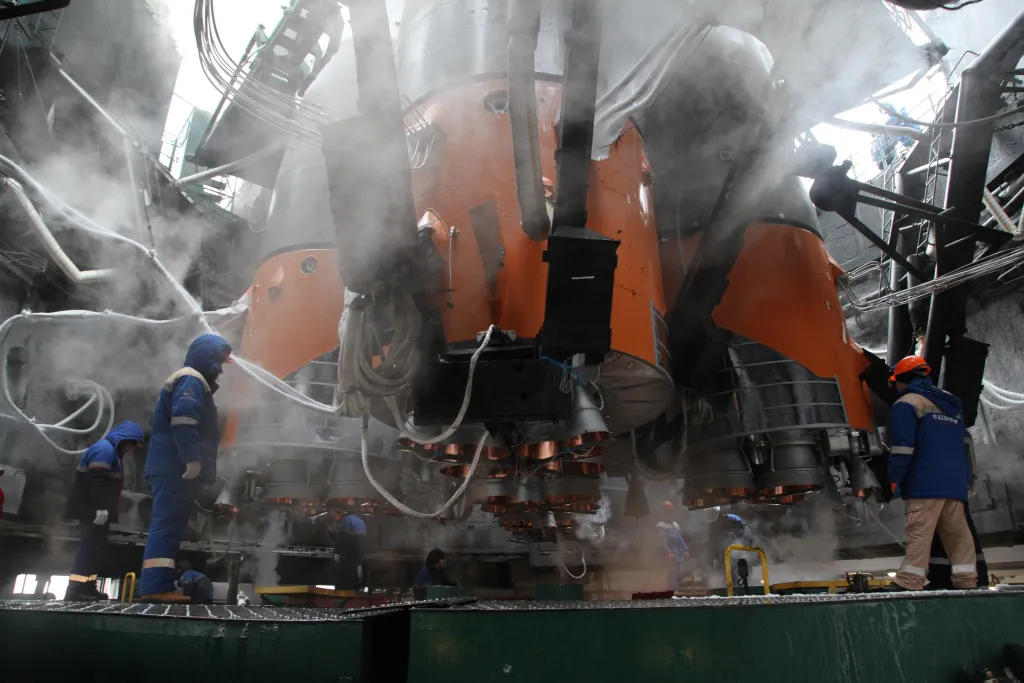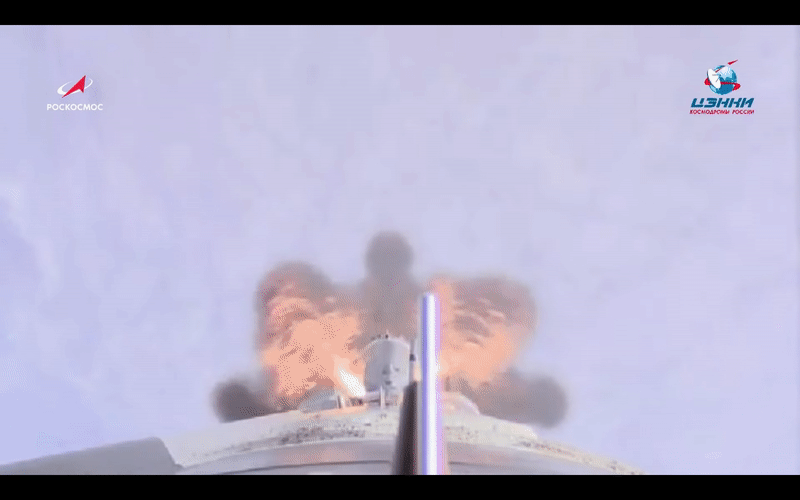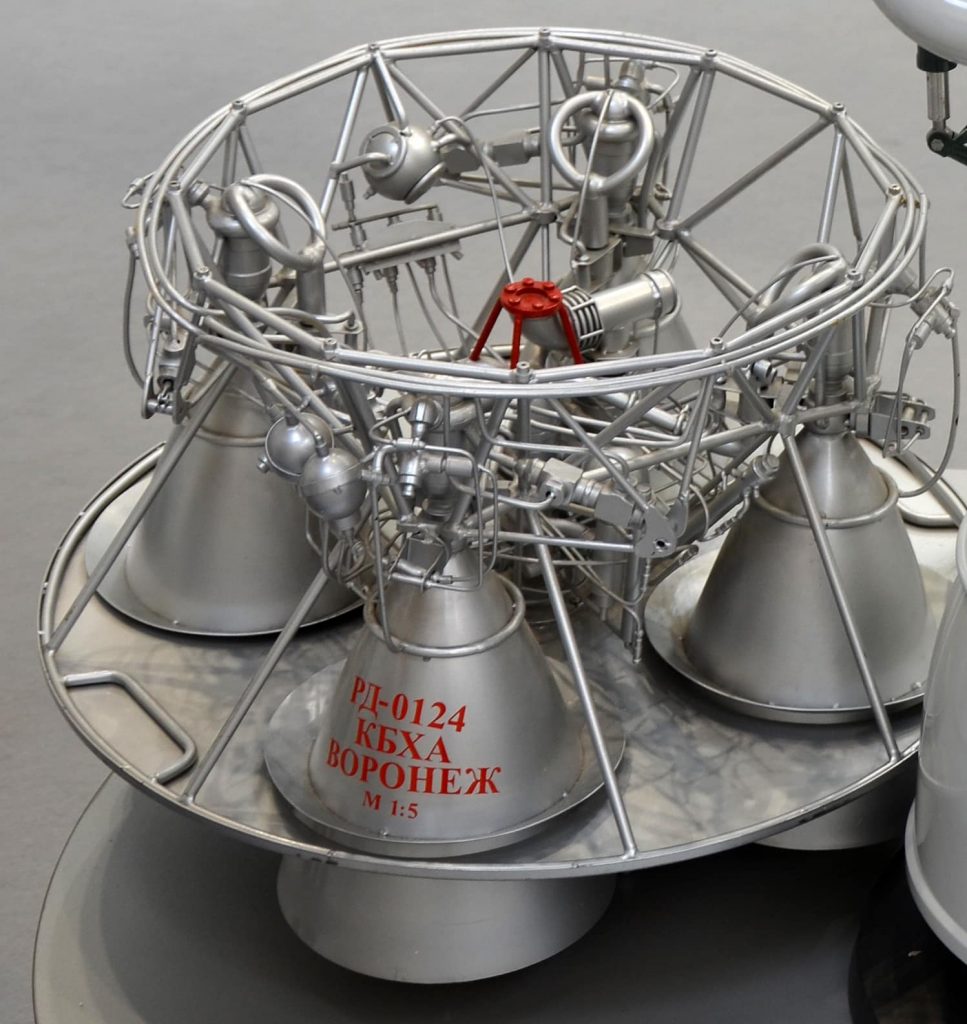Featured image credit: ROSCOSMOS
Liftoff Time | November 25, 2023 – 20:58:06 UTC | 23:58:06 MSK |
|---|---|
Mission Name | A TBD military satellite, possibly Razdan 1, and possibly under the designation Kosmos 2572 |
Launch Provider | Vozdushno-Kosmicheskiye Sily Rossiyskoy Federatsii (VKS RF), or the Air and Space Forces of the Russian Federation |
Customer | Russian Ministry of Defense |
Rocket | Soyuz 2.1b |
Launch Location | Site 43/4 at the Plesetsk Cosmodrome, Russian Federation |
Payload mass | Probably 7,000 kg (~15,400 lb) |
Where did the satellite go? | TBD polar orbit, but at least initially to a 300 km by 320 km (~186 mi by ~200 mi) orbit and 96.63 degrees in inclination |
Did they attempt to recover the first stage? | This is not a capability of the Soyuz 2.1b |
Where did the first stage land? | The side boosters crashed into the White Sea, and the first stage crashed into the Barents Sea, northwest of the launch site |
Did they attempt to recover the fairings? | This is not a capability of the Soyuz 2.1b |
Were these fairings new? | Yes |
This will be the: | – 5th launch of a Bars-M satellite – 85th launch of Soyuz 2.1b – 5th launch of Soyuz 2.1b of 2023 – 190th orbital launch attempt of 2023 |
Where to watch | Official video via an unofficial account, Telegram original source |
What’s All This Mean?
Russia readies the launch of the Bars-M No. 5 satellite, a military surveillance satellite, atop a Soyuz 2.1a rocket. To that end, the rocket lifts off from the Plesetsk Cosmodrome in Russia. Additionally, this mission marks the fifth mission of Soyuz 2.1b in 2023.
It is important to note that there is a significant uncertainty regarding both the satellite and the rocket performing this launch. Russia logically does not share much about its military launches, especially before they take place. We will update accordingly as information becomes available.
How Did It Go?
Russian authorities have declared the launch a success, with the satellite achieving the expected orbit. However, insider information would indicate this was not a Bars-M satellite. Different analysts favor the notion this was Razdan 1, another type of military satellite. Additionally, most satellites from Russia such as this receive a Kosmos designation, reported as 2571 in this case. This number is likely to change to 2572, given that Kosmos 2570 deployed a subsatellite that has not yet been taken into account.
As of November 27, and for the time being, we will adopt the Kosmos 2572 designation, but we will continue to update when more precise information is available.
What Is Kosmos 2572 (Razdan 1)?
Though we are still unsure about payload identity, Kosmos 2572 could possibly be the Razdan 1 satellite. The Central Design Buro Progress developed its bus, while the payload fell under the responsibility of the Leningrad Optical Mechanical Association. As a consequence, the purpose of the satellite is carry out optical reconnaissance for the Russian Aerospace Forces. That is, it will take pictures of relevance to the country’s government, replacing its Persona predecessors.
Even if there is not much information about this satellite, available information suggests Razdan 1 features deployable solar arrays to procure electrical power and batteries to store it. In addition to that, its mass should probably be at least 7,000 kg (~15,400 lb).
What Is The Soyuz 2.1b?
Soyuz is a multi-use medium-lift launch vehicle that was introduced in 1966 and since then has been the workhorse of the Soviet/Russian space program. It is capable to launch civilian and military satellites, as well as cargo and crewed missions to the ISS. Over the decades, several variants of the Soyuz rocket have been developed. Soyuz 2.1b is one of its latest iterations that belongs to the Soyuz-2 rocket family.

The rocket consists of three stages, all of them expendable. When launching to the ISS, Soyuz-2 can be flown with either a Progress capsule or a Soyuz spacecraft.
Soyuz 2.1b is about 46.3 meters (152 ft) in height and 2.95 meters (9 feet) in diameter. The vehicle’s total lift-off mass is approximately 312,000 kg (688,000 lb). The rocket’s payload lift capacity to low-Earth orbit (LEO) is between 6,600 and 7,400 kg depending on the launch site.
Stages
| First Stage | Second Stage | Third Stage | |
| Engine | 4 RD-107A | RD-108A | RD-0124 |
| Total Thrust | 840 kN (188,720 lbf), sea level 1,020 kN (229,290 lbf), vacuum | 792 kN (178,140 lbf), sea level 922 kN (207,240 lbf), vacuum | 294 kN (66,094 lbf), vacuum |
| Specific Impulse (ISP) | 263 s, sea level 320 s, vacuum | 258 s, sea level 321 s, vacuum | 359 s, vacuum |
Side Boosters
The first stage of the Soyuz 2.1b rocket is composed of 4 side boosters that are powered by RD-107A engines. Each one of the boosters has a conical shape and a dry weight of 3,784 kg. It is approximately 19.6 meters in length, with a diameter of 2.7 meters. Each side booster has two vernier thrusters that are used for flight control.
The RD-107A engine runs on rocket-grade kerosene (RP-1) and liquid oxygen (LOx). The propellants are stored in the pressurized aluminum alloy tanks, the kerosene tank is located in the cylindrical part of the booster, and the LOx one is in the conical section. Each one of those engines have 4 combustion chambers and together they are capable of producing a thrust of 840 kN at sea level and 1,020 kN in a vacuum.

Perhaps, the most spectacular moment of the Soyuz-2 rocket’s launch is the separation of the first stage. It happens approximately 2 minutes after the launch. The boosters perform a pattern, known as the “Korolev cross” (named after Sergei Korolev, a very important figure of the USSR space program and history).
Second And Third Stages
The center core stage is powered by a single RD-108A engine, and the upper stage is fitted with a single RD-0124 engine. Both of these engines run on RP-1 and LOx and have 4 combustion chambers. The second stage is 27.1 meters long, with a diameter of 2.95 meters, and a dry mass of 6,545 kg. It has 4 vernier thrusters for three-axis flight control.
The third stage of a Soyuz-2 rocket has a height of 6.7 meters, a diameter of 2.7 meters, and a dry mass of 2,355 kg. One interesting thing about the RD-0124 engine on this stage is that it starts its ignition sequence prior to stage separation. This process is called “hot fire staging”.

Upper stages: no upper stage will be present during the Kosmos 2572 launch.




